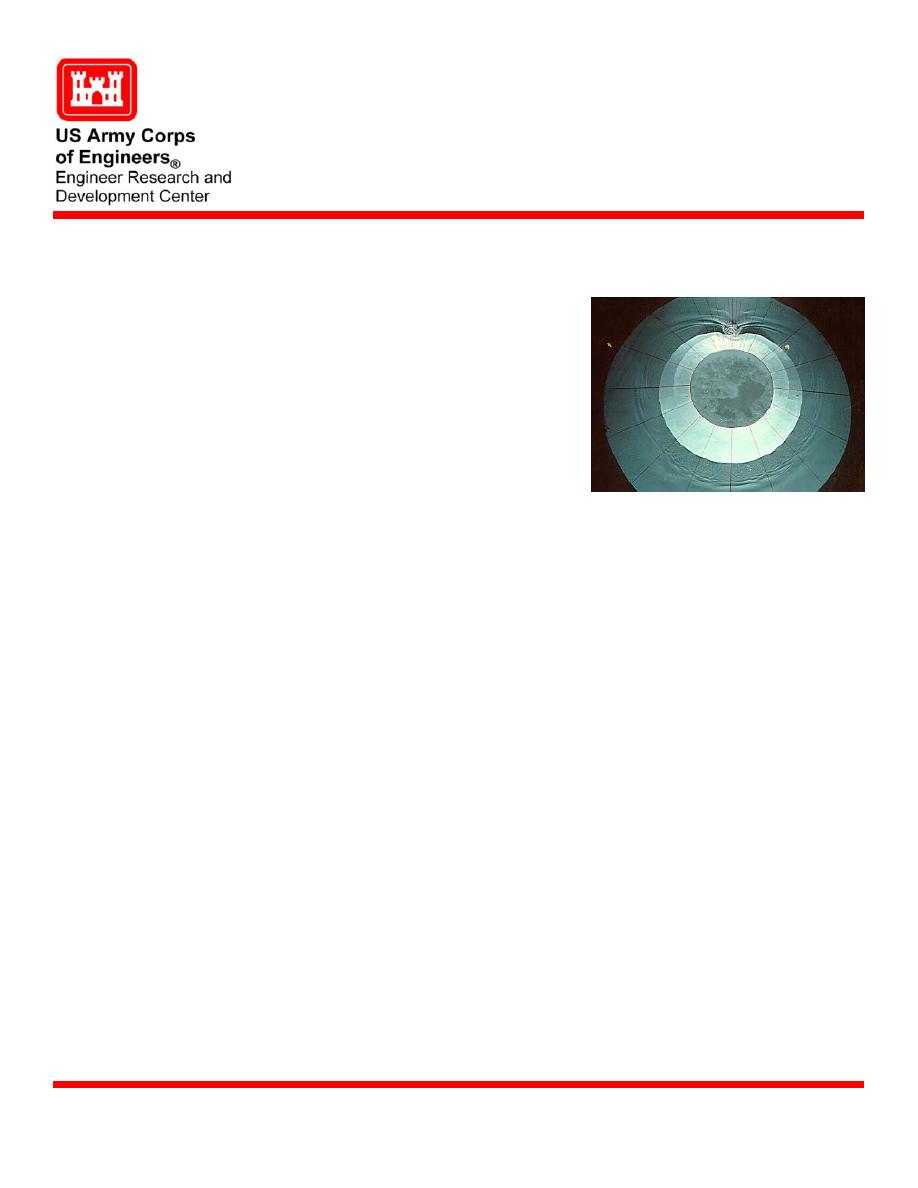
Tsunami Runup Physical Modeling
Description
Flume and basin physical model studies were conducted to provide a better understanding
of the physical phenomena and verify numerical models used in predicting tsunami wave
runup on beaches, islands, and vertical walls.
Tsunamis are long water waves of small
Issue
steepness generated by impulsive geophysical
events on the ocean floor or at the coastline.
Since 1992 tsunamis in Nicaragua, Indonesia,
Japan, and Russia have caused millions of
dollars in damages and killed many thousands
of people. Wave runup is the most devastating
hazard associated with tsunamis, yet it is the
least understood. The National Science
Foundation (NSF) funded a 4-year study
beginning in FY92 to identify important
physical parameters involved in 3D tsunami
Tsunami-generated edge waves wrapping
runup. An international advisory committee
around model of Babi Island in the Flores Sea
met with the principal investigators once a
year and included Drs. Howell Peregrine, University of Bristol, Fred Raichlen, Caltech,
Nobu Shuto, Tohuku University, and Robert Street, Stanford University.
CHL flumes and basins were used to conduct three physical models of a plane beach,
Products
vertical wall, and a circular island. The 7-m diameter circular island was 60-cm tall with a
1 on 4 beach slope. This model island approximated Babi Island, Indonesia, which
suffered extensive damage along the southern or lee side of the island when runup heights
of 5.6 to 7.1 m devastated entire villages as a result of the 1992 Flores Tsunami.
Capacitance wave gages and digital runup gages were used to measure the evolution,
uniformity, and runup of tsunami waves propagating around the perimeter of the island.
A bathymetric survey of Nicaragua was conducted to identify unusual bathymetric features
Supporting Technology
that might have been the cause for large differences in wave runup during the 1992
Nicaraguan earthquake and tsunami.
Two benchmark problems on a circular island and vertical wall from CHL were used to
Benefits
validate numerical models in the International Workshop on Long Wave Runup Models.
The National Science Foundation (NSF), Cornell University, Harvard University,
Partners
University of Washington, University of Southern California, University of Bristol,
Caltech, Tohuku University, and Stanford University.
Dr. Michael J. Briggs, CEERD-HN-HH, 3909 Halls Ferry Road, Vicksburg, MS 39180-
Point of Contact
6199, e-mail: . Additional information can be
U.S. Army Engineer Research and Development Center
January 2005
Coastal and Hydraulics Laboratory (Project/Mission Support)
www.erdc.usace.army.mil



 Previous Page
Previous Page
